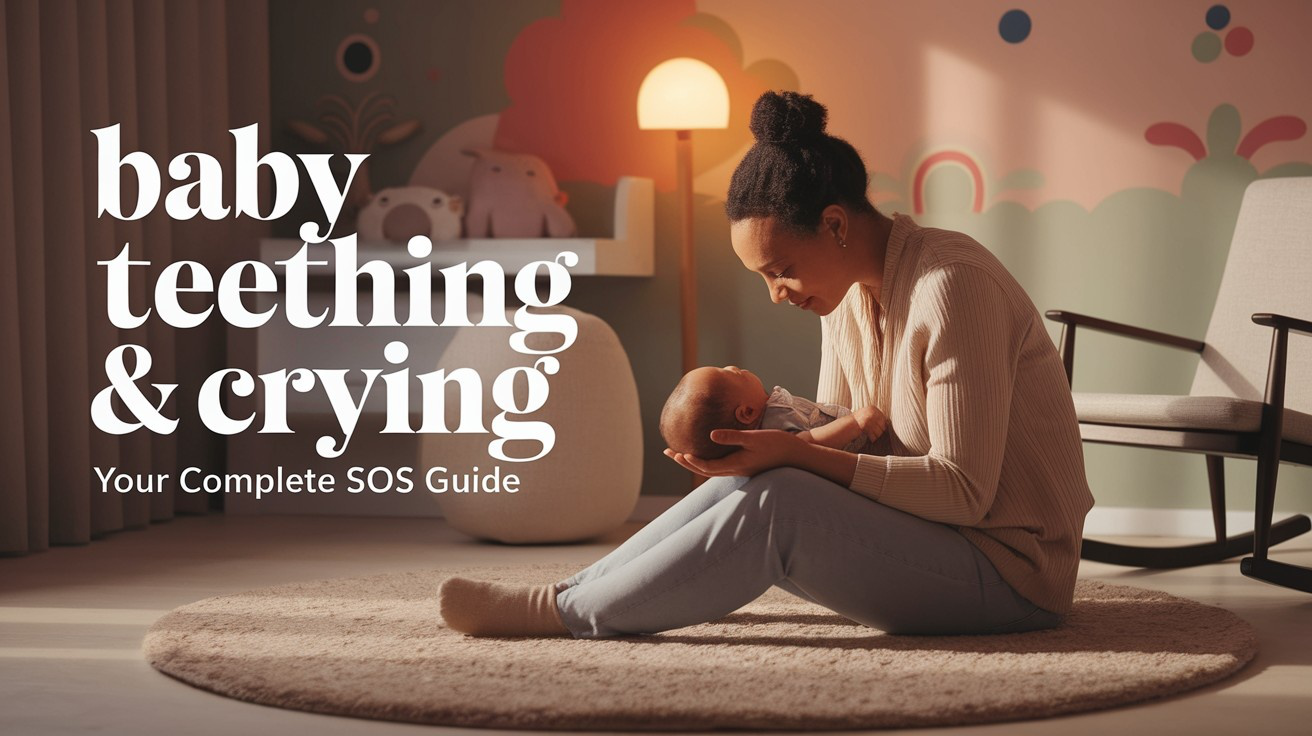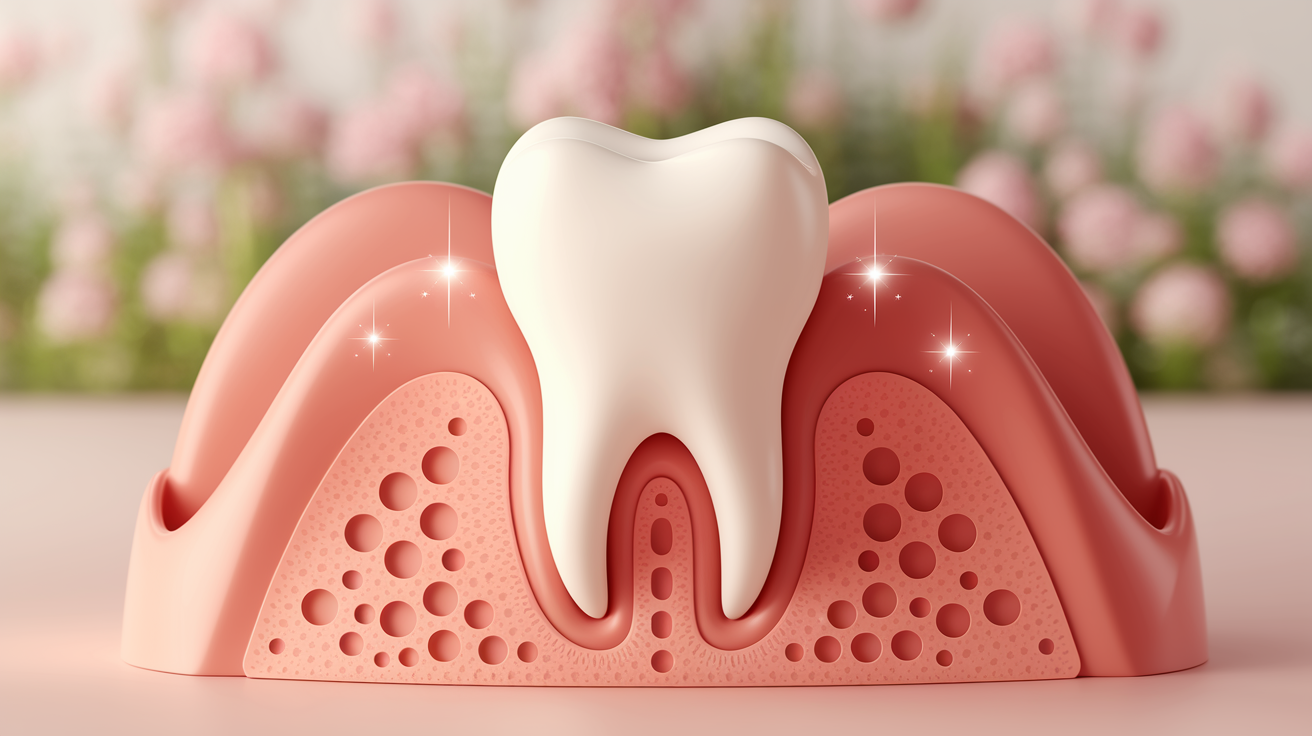
The midnight wails that echo through your home might not just be typical baby fussiness—they could be the telltale signs of teething.
That adorable gummy smile is about to change, bringing both developmental milestones and potential sleepless nights.
While most babies get their first teeth between 4 and 7 months, the timeline varies widely. Some show pearly whites as early as 3 months, and others wait until their first birthday.
Before those teeth even break through, your little one might become a drooling, chewing, irritable machine—especially when those troublesome molars arrive between 12-18 months.
Understanding what’s happening in your baby’s tender gums can help you guide this challenging but temporary phase with more confidence and fewer tears (for both of you).
The Teething Timeline: When to Expect What
Babies typically get their first teeth between 4-7 months, but this can vary widely. Knowing when to expect teeth can help you prepare for challenging periods.
Your baby’s first teeth (usually the bottom front ones) generally arrive between 4 and 7 months of age. But don’t be alarmed if your little one is an early starter at 3 months or a late bloomer at 12 months—both scenarios fall within the normal range.
The pesky molars, which tend to cause the most discomfort, typically appear between 12 and 18 months. These larger teeth have more surface area pushing through the gums, which explains why they often cause more pain than earlier teeth.
Did you know? Before teeth break through, you might notice your baby drooling more, chewing on everything in sight, and becoming irritable, especially at night. These signs often start several weeks before you see that first tooth peek through.
Pro Tip: Keep a “tooth diary” to track when teeth appear. This not only helps you anticipate future teething episodes but also gives you something to share with your pediatrician during well-baby visits.
What’s Actually Happening in Your Baby’s Mouth?

Understanding the physical process of teething helps explain why babies experience discomfort and exhibit certain behaviors during this time.
Let’s discuss what’s really happening inside. Teeth don’t just pop up overnight; they’ve been developing since before birth.
When a tooth is ready to emerge, it pushes through the gums, which can cause swelling, tenderness, and pain.
This process often leads to increased drooling (which can cause facial rashes), a desire to chew on hard things, and general fussiness. Many babies also experience disrupted sleep patterns and may temporarily lose interest in eating because their mouth hurts.
Remember that what looks like a small change to us—just a tiny tooth—is a big deal in your baby’s small mouth. The pressure and inflammation can feel quite intense to them.
Immediate Relief Strategies for Your Crying Baby

Several quick techniques, including cold therapy, massage, and appropriate pain relief options, can provide immediate comfort to a teething baby.
1. Cold Therapy: Your First Line of Defense
Cold is your best friend during teething. It numbs the gums and reduces inflammation. Try refrigerating (never freezing) a clean teething ring for about 15-30 minutes before giving it to your baby.
A simple clean washcloth, dampened and chilled in the refrigerator, can also work wonders. The texture gives your baby something to gnaw on, while the cold provides relief.
If your baby has started solid foods, offer chilled (not frozen) foods like yogurt, applesauce, or pureed fruits. The cold temperature soothes their gums while the nutrition keeps them healthy.
Wait—haven’t you tried food pouches yet? These can be particularly soothing when slightly chilled, and the act of sucking helps distract from the pain.
2. Gentle Massage Techniques That Work
Sometimes, your touch provides the best relief. Wash your hands thoroughly, then use your finger to rub your baby’s gums gently. Apply light pressure—this counter-pressure can feel really good against the pushing sensation of emerging teeth.
Specialized teething tools designed for gum massage exist. They are often made with soft, textured silicone that can reach back molars more easily than your finger.
Timing matters with massage. Try it before feeds when pain might be preventing good nursing or bottle-feeding, and again before naps when discomfort might make it hard to settle down.
3. Pain Relief Options: What’s Safe and What’s Not
For those really tough days, over-the-counter pain medications like infant acetaminophen (Tylenol) or ibuprofen (for babies over 6 months) might be needed—but always check with your pediatrician first for the right dosage.
Be cautious about natural remedies. Clove oil is sometimes recommended but can be too strong for babies. Chamomile tea (cooled and offered in small amounts) has some evidence behind it for teething discomfort.
Now for the “please avoid” list: amber teething necklaces (choking hazard with no proven benefits), homeopathic teething tablets (FDA warnings about safety), and teething gels with benzocaine (can cause a rare but serious condition that reduces oxygen in the bloodstream).
Pro Tip: If you do use medication, time it for about 30 minutes before bedtime on particularly rough nights. This can help your baby fall asleep more comfortably without needing multiple night doses.
Long-Term Management for Teething Discomfort

Creating a supportive environment and adjusting routines can make the entire teething process more manageable for both the baby and the parents.
Creating a Teething-Friendly Environment
Your baby might find it harder to sleep during teething, so consider making their sleep space extra comfortable. A slightly elevated mattress (safely done by placing a towel under the mattress, not in the crib) can help with increased nighttime drooling.
White noise machines can mask the sound of your baby’s fussing, which sometimes wakes them up more fully when they are stirring.
Room temperature matters too—a slightly cooler room (around 68-70°F) can help reduce the inflammation and discomfort of teething.
Strange but true: some babies find vibration soothing during teething. A crib attachment that gently vibrates or even short car rides can provide welcome distraction and relief.
Adapting Your Daily Routine During Teething Phases
During intense teething periods, you might need to offer smaller, more frequent feedings. Your baby may be reluctant to eat because of mouth pain but still needs proper nutrition.
Build in extra cuddle time. The security of being held close can make a huge difference to how your baby handles discomfort. Babywearing can be especially helpful during teething episodes.
Consider shifting bath time to right before the fussiest period (often evening). The warm water can be relaxing, and playing in water provides a distraction from discomfort.
Maintaining Your Sanity: Self-Care for Parents
Let’s be honest—a constantly crying baby takes a toll on parents, too. If you have a partner, consider taking shifts during tough nights so each person gets at least one four-hour stretch of uninterrupted sleep.
Feel overwhelmed by the crying? It’s OK to place your baby safely in their crib and step away for a few minutes to take deep breaths and reset your patience.
Don’t hesitate to call in reinforcements. Friends and family often want to help but don’t know how—be specific about what you need, whether it’s someone to hold the baby while you shower or assistance with meal prep.
When to Call the Doctor?

While teething causes discomfort, it’s important to recognize when symptoms might indicate something more serious that requires medical attention.
Distinguishing Between Teething and Illness
Mild fussiness, drooling, and even slight changes in stool consistency can be normal during teething. However, high fevers (over 100.4°F), extreme irritability, and diarrhea are not typical teething symptoms and might indicate illness.
Watch for extreme changes in behavior. If your normally active baby becomes listless or your usually happy baby can’t be consoled for hours, it’s time to call the doctor.
Ear pulling can happen with teething due to referred pain, but it can also signal an ear infection. If it’s accompanied by fever or sleep difficulties, check with your doctor.
Red Flags That Require Immediate Care
Seek immediate medical attention if your baby shows signs of:
- Severe, inconsolable pain that doesn’t respond to any comfort measures
- Gums that look infected (extremely red, swollen, or have pus)
- Signs of dehydration like significantly fewer wet diapers, no tears when crying, or extreme lethargy
Expert-Recommended Products Worth Trying

While no single product works for every baby, certain types of teethers and solutions have proven helpful for many families.
Best Teethers for Different Stages
Silicone teethers are dishwasher-safe and provide firm resistance. Water-filled teethers can be chilled for extra relief. Rubber teethers are often softer and more flexible.
Multi-textured teethers with different surfaces can help your baby find just the right spot to target their discomfort. Look for designs with bumps, ridges, and bristles.
Pro Tip: Keep multiple teethers in rotation in the refrigerator. When one warms up or gets too drooly, swap it out for a fresh cold one.
Safe Gels and Ointments
If you use gum gels, apply sparingly with a clean finger, following package directions carefully. Most shouldn’t be used more than 4 times daily.
Natural options containing chamomile or clove oil should be specifically formulated for babies (adult versions are too strong) and used in moderation.
Wearable Solutions That Actually Help
Teething mittens attach to your baby’s hands, preventing them from scratching themselves while giving them something safe to chew on.
Silicone necklaces worn by parents (never by babies) give babies something to gnaw on while being held—make sure they’re specifically designed for teething.
The Bottom Line
Teething is a natural process that every baby experiences differently, but with the right knowledge and tools, it can be made more manageable.
From immediate relief strategies like cold therapy and gentle massage to long-term adjustments in your daily routine, you now have a comprehensive toolkit to soothe your teething baby.
Remember that while discomfort is normal, severe symptoms like high fevers, extreme irritability, or signs of infection warrant medical attention.
By distinguishing between teething discomfort and actual illness, you’ll know when home remedies are sufficient and when to seek help.
Though these fussy days and restless nights might seem endless, each tooth that emerges brings you one step closer to completing this milestone.
Stay patient, practice self-care, and soon enough, those teary teething troubles will be just another memory in your parenting travels.
If you’re interested in more informational content on mothers and babies, feel free to click here and research other blogs that you might enjoy.
